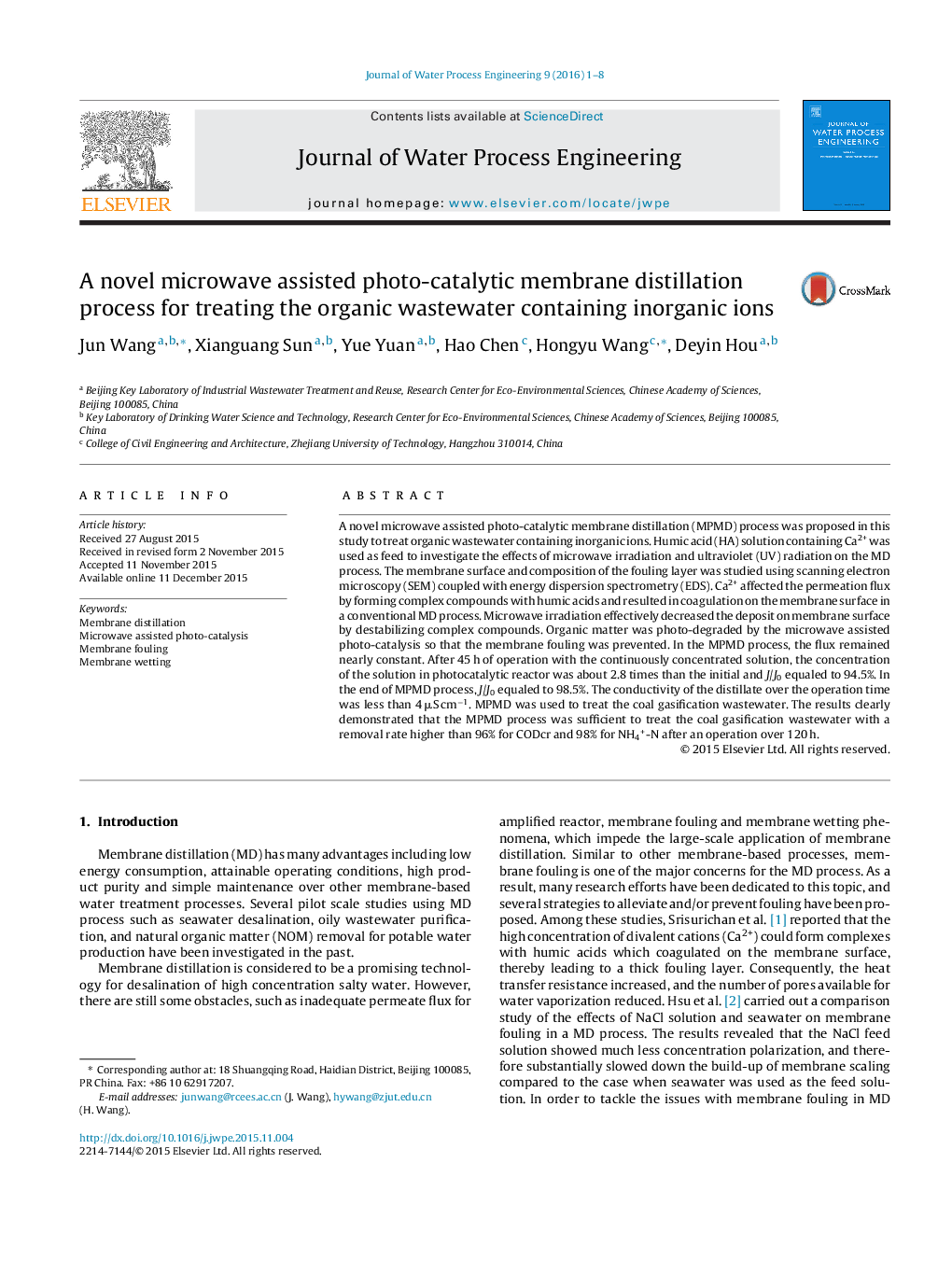| Article ID | Journal | Published Year | Pages | File Type |
|---|---|---|---|---|
| 232464 | Journal of Water Process Engineering | 2016 | 8 Pages |
•Microwave assisted photo-catalysis and VMD process were integrated as a novel MPMD process.•A novel MPMD reactor was set up using MWL to improve the VMD process.•Microwave assisted photo-catalysis could mitigate membrane fouling effectively.
A novel microwave assisted photo-catalytic membrane distillation (MPMD) process was proposed in this study to treat organic wastewater containing inorganic ions. Humic acid (HA) solution containing Ca2+ was used as feed to investigate the effects of microwave irradiation and ultraviolet (UV) radiation on the MD process. The membrane surface and composition of the fouling layer was studied using scanning electron microscopy (SEM) coupled with energy dispersion spectrometry (EDS). Ca2+ affected the permeation flux by forming complex compounds with humic acids and resulted in coagulation on the membrane surface in a conventional MD process. Microwave irradiation effectively decreased the deposit on membrane surface by destabilizing complex compounds. Organic matter was photo-degraded by the microwave assisted photo-catalysis so that the membrane fouling was prevented. In the MPMD process, the flux remained nearly constant. After 45 h of operation with the continuously concentrated solution, the concentration of the solution in photocatalytic reactor was about 2.8 times than the initial and J/J0 equaled to 94.5%. In the end of MPMD process, J/J0 equaled to 98.5%. The conductivity of the distillate over the operation time was less than 4 μS cm−1. MPMD was used to treat the coal gasification wastewater. The results clearly demonstrated that the MPMD process was sufficient to treat the coal gasification wastewater with a removal rate higher than 96% for CODcr and 98% for NH4+-N after an operation over 120 h.
